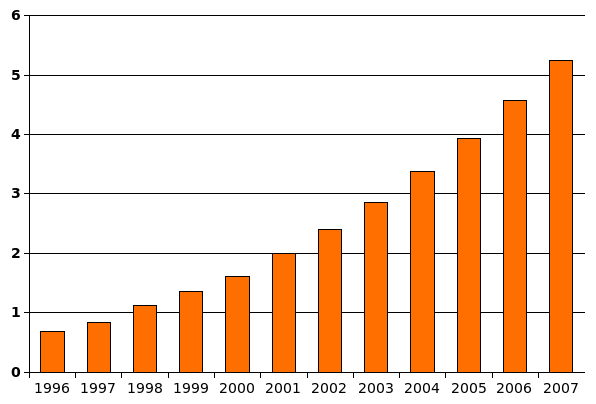 |
This is a file from the Wikimedia Commons. Information from its description page there is shown below.
Commons is a freely licensed media file repository. You can help.
|
Summary
| DescriptionUS-autism-6-17-1996-2007.png |
English: Bar chart of the number (per 1,000 U.S. resident children aged 6–17) of children aged 6–17 who were served under the Individuals with Disabilities Education Act (IDEA) with a diagnosis of autism, from 1996 through 2007. Counts of children diagnosed with autism for each year were taken from Table 1-9 of IDEA Part B Child Count (2005) and from Table 1-11 of IDEA Part B Child Count (2007). These were divided by census estimates for U.S. resident population aged 6–17 taken from US census estimates for 1990–1999 resident population by age and the similar estimates for 2000–2007; for all years, the September population estimates were used.
|
| Date |
13 October 2008 |
| Source |
Own work |
| Author |
Eubulides |
Licensing
 |
Permission is granted to copy, distribute and/or modify this document under the terms of the GNU Free Documentation License, Version 1.2 or any later version published by the Free Software Foundation; with no Invariant Sections, no Front-Cover Texts, and no Back-Cover Texts. A copy of the license is included in the section entitled GNU Free Documentation License. http://www.gnu.org/copyleft/fdl.htmlGFDLGNU Free Documentation Licensetruetrue
|
File usage
The following pages on Schools Wikipedia link to this image (list may be incomplete):
Learning is fun and easy with Schools Wikipedia. SOS Childrens Villages helps those who have nothing and no one, giving them back the famly they have lost and bringing them the very best opportunities for a happy, healthy future. Sponsoring a child is the coolest way to help.



